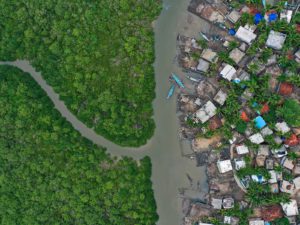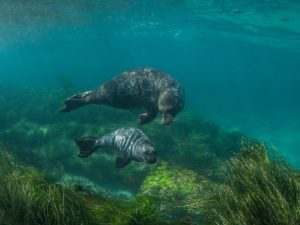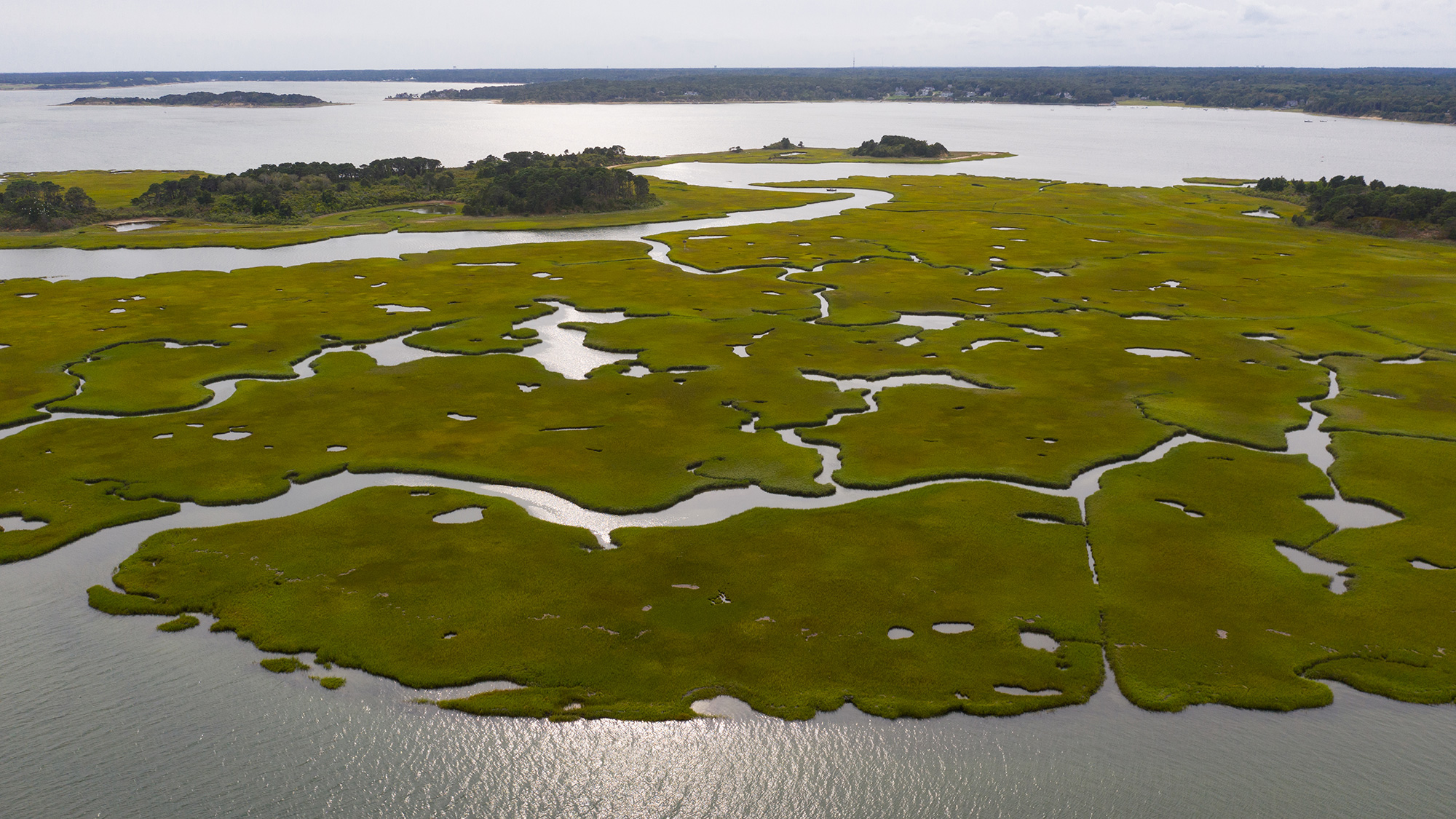
Salt marshes and estuaries in Cape Cod, Massachusetts. Photo: iStock / velvetfish
Our Shared Seas spoke with Alison Bowden—an aquatic scientist and the Conservation Director for Rivers, Coasts, and Oceans for The Nature Conservancy (TNC) in Massachusetts—to explore why water quality is an important but commonly overlooked threat in marine conservation. In this interview, she talks about TNC’s work to address sewage pollution on Cape Cod, Massachusetts, and discusses the implications of coastal water quality for climate resilience, commercial fisheries, and human health.
How have issues around water quality, particularly where wastewater is concerned, shown up in your work?
Nutrient pollution from sewage and stormwater is a huge issue in Massachusetts and across the Northeast United States, particularly on the coasts. There is a strong nexus between human health impacts and ecological consequences there.
On Cape Cod in coastal Massachusetts, the typical method of sewage disposal is septic systems, and most estuaries on Cape Cod have a severe eutrophication problem, largely because of those individual septic systems. Plus, all of the drinking water for those 15 towns on Cape Cod comes from a sole source aquifer. These septic systems are discharging into the groundwater in some cases, and then people take that water out as drinking water. As far as we know, conventional septic systems don’t do much for either nutrients or those contaminants. In that water there are nitrates, contaminants of emerging concern, pharmaceuticals, and other things that are quite poorly treated even by conventional sewage treatment plants and are linked to negative human health impacts.
On the ecological side, salt marshes are critical for our fisheries production, and New Bedford is the most productive and valuable fishing port in the United States. A lot of that is dependent on our fantastic salt marshes and all our coastal productivity creating the food for all those fish. When we overfeed salt marshes with too many nutrients, they put their energy into growing above-ground biomass instead of below ground, which holds everything together. Sort of like if you overfeed tomatoes, you get lots of long, leggy plants, but no fruit. If salt marsh grass gets too many nutrients, you get lots of tall above-ground growth and nothing below ground. And then when the winter storms come, the marshes just fall apart. A marsh that has fallen apart isn’t fish habitat, and it can’t protect communities from storms.
A marsh that has fallen apart isn’t fish habitat, and it can’t protect communities from storms.
Are you starting to see that already—the marshes falling apart?
Yes. It’s a combination of sea level rise and excess nutrients. The Nature paper that demonstrated this relationship between nitrogen and salt marshes was a controlled fertilization experiment. It found that the pattern of marsh loss we’ve observed matches nutrient concentration patterns, so we have good evidence that this is a huge problem and a growing threat.
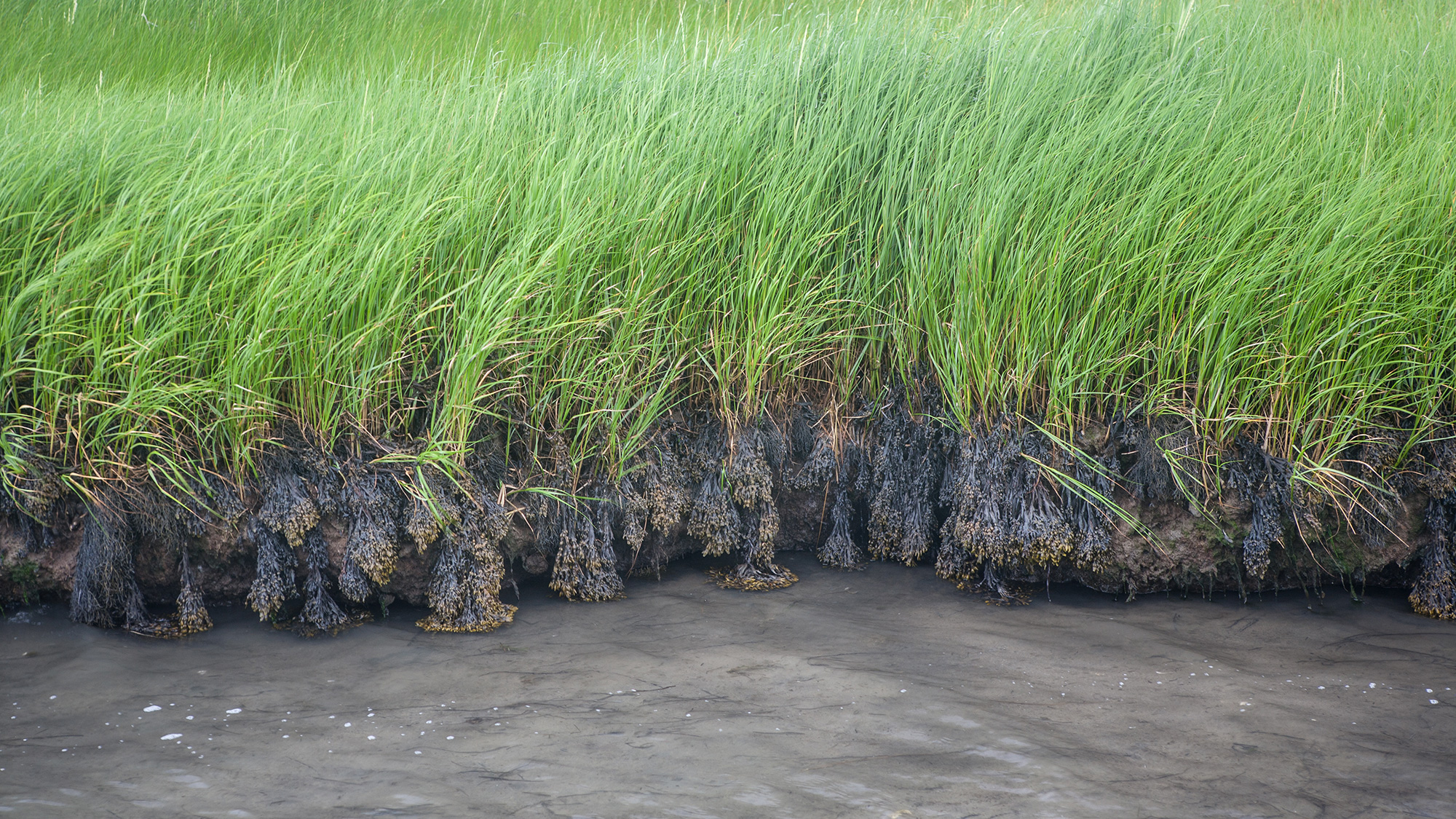
A salt marsh on Cape Cod, Massachusetts. Healthy marshes serve as habitat for fish, marine invertebrates, and migratory birds. Photo: istock/velvetfish
Are there other ecosystems for which you’re seeing these sorts of impacts as well?
Absolutely. We’ve already largely seen the disappearance of seagrasses in many areas of Cape Cod and across the Northeast. If you put too many nutrients into a subtidal system like that, you make the water cloudy, reduce light transmission, have epiphytes growing on the leaves of the plants, and the system collapses. We used to have a lot more nice healthy seagrass beds in New England. But we’ve lost so much of them. It’s the same thing with wild oyster reefs. We’re at a fraction of a percentage of the historic distribution of shellfish beds, particularly oysters. We didn’t necessarily lose oysters because of pollution, but the pollution makes it harder to bring them back. And active restoration of shellfish beds is complicated until we solve the water quality issue.
We didn’t necessarily lose oysters because of pollution, but the pollution makes it harder to bring them back. And active restoration of shellfish beds is complicated until we solve the water quality issue.
What about other climate impacts from nutrients?
While the global ocean is getting more acidic in general, our local estuaries are getting acidic even faster. Eutrophication, which is caused by excess nutrients, is an important driver of that. When we add too many nutrients to the water, algae growth increases. When the algae dies back, carbon dioxide is produced, and that gets dissolved in the water. As more carbon dioxide gets dissolved into the water, it lowers the water’s pH and makes it more acidic. That, for example, makes it harder for shellfish to grow their shells. We rely on shellfish to filter water, so it turns into a cascade of negative impacts. There is a whole suite of ecosystem impacts from nutrient pollution.
What I’m hearing is that, with water quality, everything is connected.
Water quality is connected to everything—our fisheries productivity, our coastal resilience, our public health, and the economics of people enjoying the coast, the water, and shellfish fisheries. All of that is connected.
Water quality is connected to everything—our fisheries productivity, our coastal resilience, our public health, and the economics of people enjoying the coast, the water, and shellfish fisheries. All of that is connected.
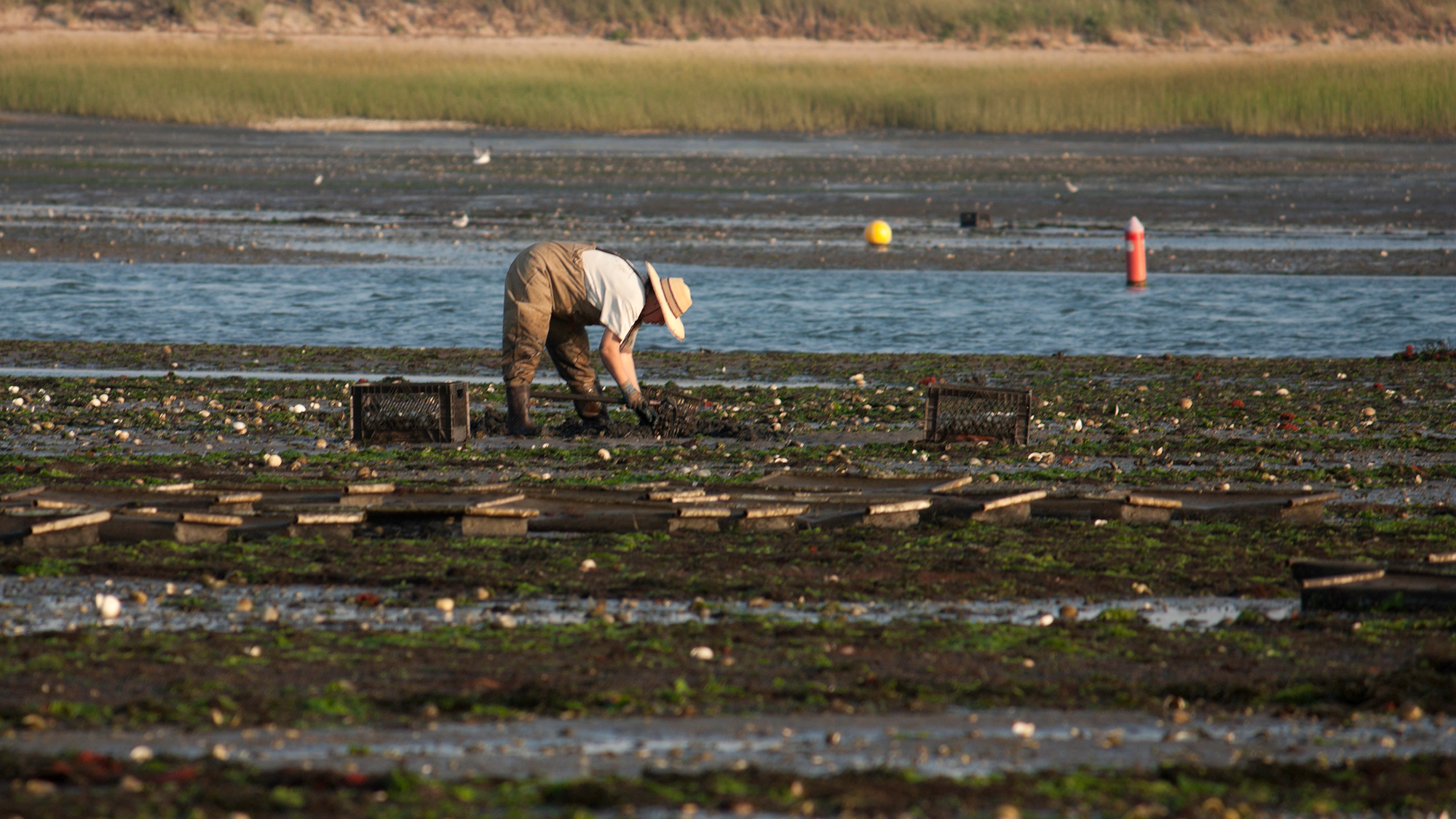
A person oyster fishing in Wellfleet, Massachusetts. Photo: iStock / cindygoff
What sorts of solutions are you working on?
Well, the reason that The Nature Conservancy is working on Cape Cod is that the ecosystem really has high biodiversity value and is critical for fisheries. It also has a threat that is clearly identifiable. Local residents and regulators understand that threat. The average person on Cape Cod, not just the environmentalist, knows what’s wrong, and why. And there is a short list of things that can be done to fix it.
We’re trying to work proactively with communities on the solution. In most estuaries on Cape Cod, the primary source of nitrogen is individual septic systems. One solution is sewering, but the economics of doing that in a sparsely developed area may be prohibitive for half of the septic systems on Cape Cod. There’s also a concern that doing that could lead to water balance issues, as that water doesn’t return to the aquifer where we need drinking water. Septic systems do recharge the aquifer. The issue will likely be solved with a mix of increased and improved sewering and other solutions that make more economic sense in some areas, like alternative septic technology.
We are working with the EPA National Office of Research and the local watershed association, Barnstable Clean Water Coalition, to test and pilot a couple of different technologies, including bioreactors in cranberry bogs and alternative septic systems, all while intensively monitoring groundwater quality. For the alternative septic systems, we are hoping to expand the pilot so we can get general approval and expand their use.
That strategy is well aligned with what is happening on Long Island in New York, too. Both places have similar issues and are made of the same stuff—terminal moraines of glaciers. We’re trying to work in partnership with them so if either place proves a technology, the other can use it.
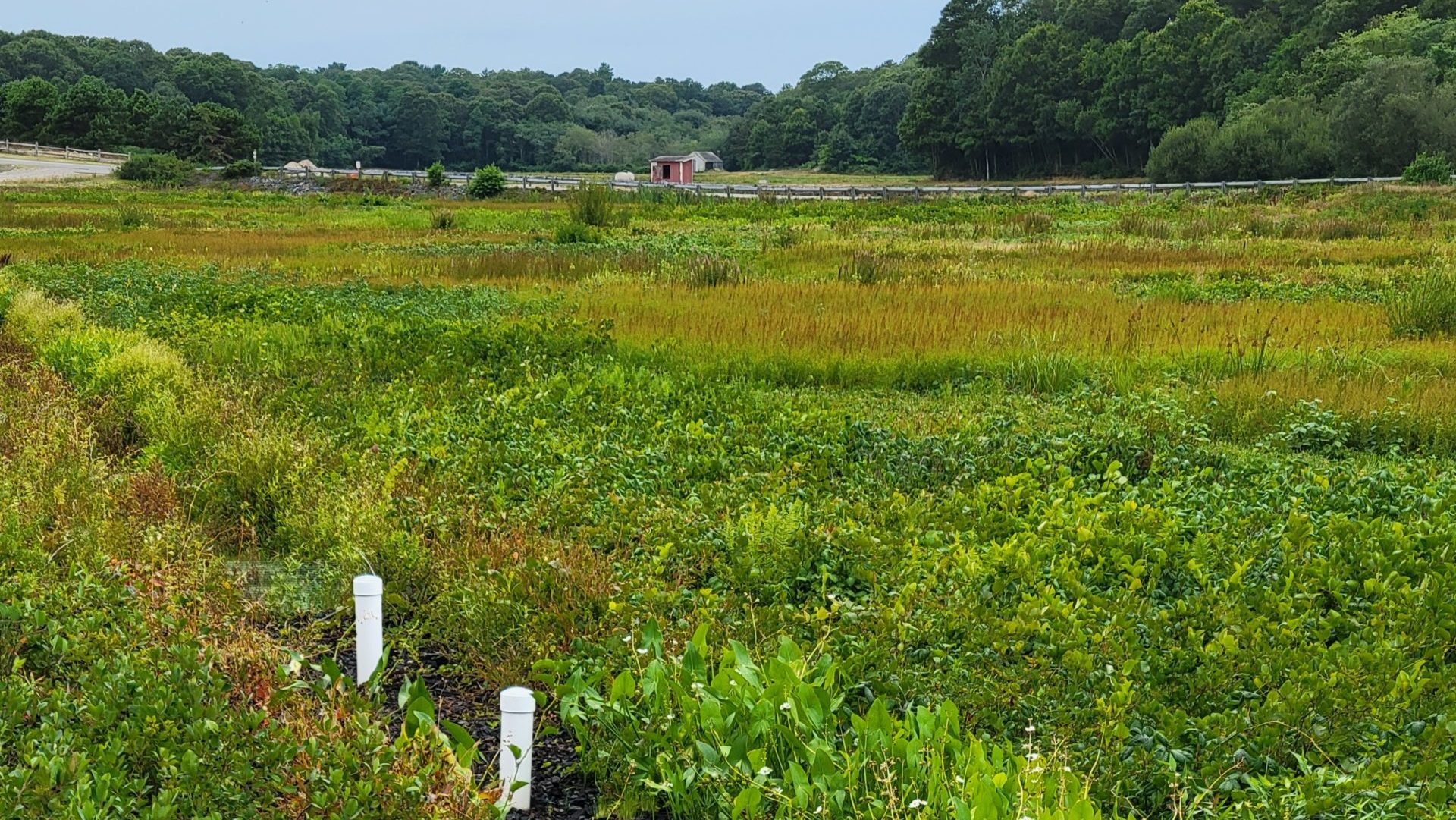
A woodchip bioreactor in an agricultural cranberry bog in Barnstable, Massachusetts. TNC is working with partners to test bioreactors that remove nutrients and improve local water quality. Photo: Alison Bowden
I’m curious, because you work on a variety of issues related to ocean health and fisheries, how you would rank your concerns around pollution, relative to some of the other threats that fisheries and coastal habitats face?
I think the threat of coastal pollution is huge. And it’s something that doesn’t get the same kind of attention. There aren’t a lot of movies about coastal pollution, and it’s the thing that people don’t really talk about. However, once you start to see the impacts of it, particularly economically, people understand. If you go talk to someone on the street on Cape Cod, whether they work directly in a fishery or not, it is very clear that people understand that their economy is tied to the health of the ocean. But I think in general and in urban areas in particular, most people don’t know where their water comes from or where it goes and what impact it’s having once it gets there.
I think the threat of coastal pollution is huge. And it’s something that doesn’t get the same kind of attention. There aren’t a lot of movies about coastal pollution, and it’s the thing that people don’t really talk about.
Beyond the general public, do you think this issue is neglected by marine conservation organizations and funders? If so, why?
My perception is that it’s definitely neglected. Part of that is because these impacts can be technical to understand. I am a scientist, and previously it was not obvious to me what some of those impacts were, like the salt marshes.
It’s not visibly obvious either, like ocean plastics or trash. I hear people say they will never use a plastic straw again because they’ve seen the picture of the sea turtle with the straw through its head. Even just the connection between the nutrients, the algae bloom, and the impact of the algae bloom is so many steps. So how do we create such a clear picture for people as the sea turtle and the straw that leads to the kinds of behavior change and the kinds of investments that we really need?
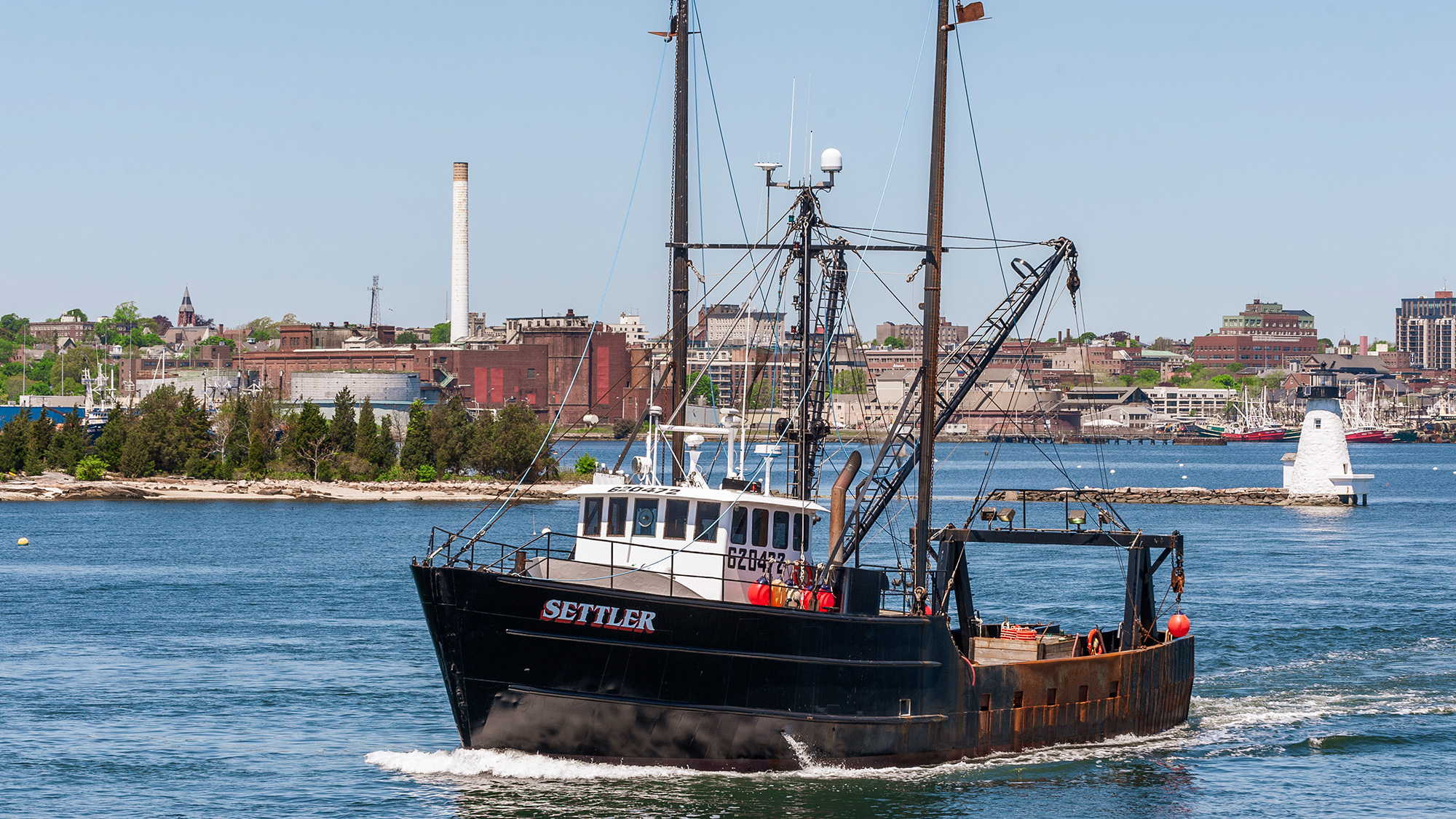
Commercial fishing boat crossing the New Bedford, Massachusetts inner harbor. New Bedford is the highest-grossing commercial fishing port in the United States. Photo: iStock / danlogan
What do you think marine conservation can gain from addressing wastewater pollution? How does this fit into work on other ocean issues? What does addressing wastewater pollution add to our ability to solve other pressing challenges?
Actually tackling the water quality problem is necessary for us to get to the broader conservation outcomes we are seeking. We talked about how everything is connected. If we lose our salt marshes to a combination of sea level rise and pollution, it doesn’t matter how great the changes we make to fisheries management are, the fisheries production will be substantially lower. These types of solutions will have multiple benefits, especially for human health, which so much of philanthropy is focused on.
That’s a reason for more significant philanthropic investment and engagement. Because you’re addressing multiple goals, you can show people working on human health outcomes that the thing you want to do for marine conservation meets their goals too. So why not do it together? I view my job as building shared understanding toward shared goals. We need to say to one another, “Oh, so you want that? And I want that! How about if we work together?”
Actually tackling the water quality problem is necessary for us to get to the broader conservation outcomes we are seeking.

